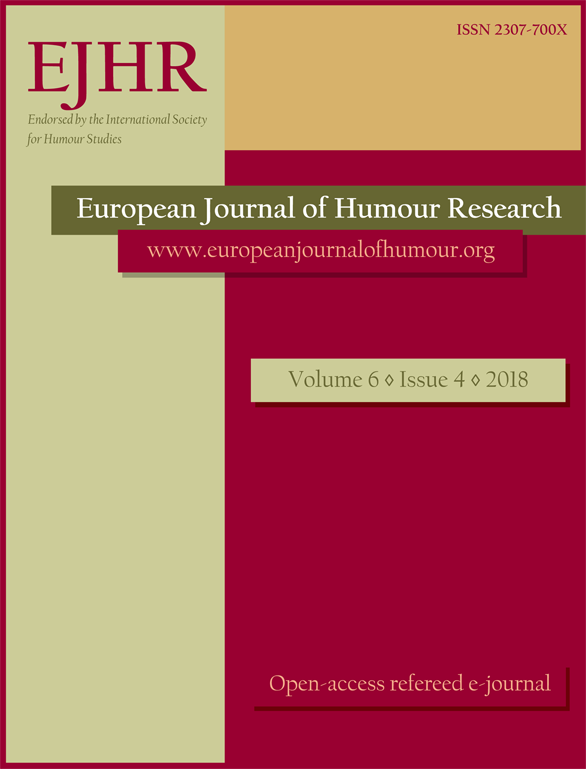
We kindly inform you that, as long as the subject affiliation of our 300.000+ articles is in progress, you might get unsufficient or no results on your third level or second level search. In this case, please broaden your search criteria.

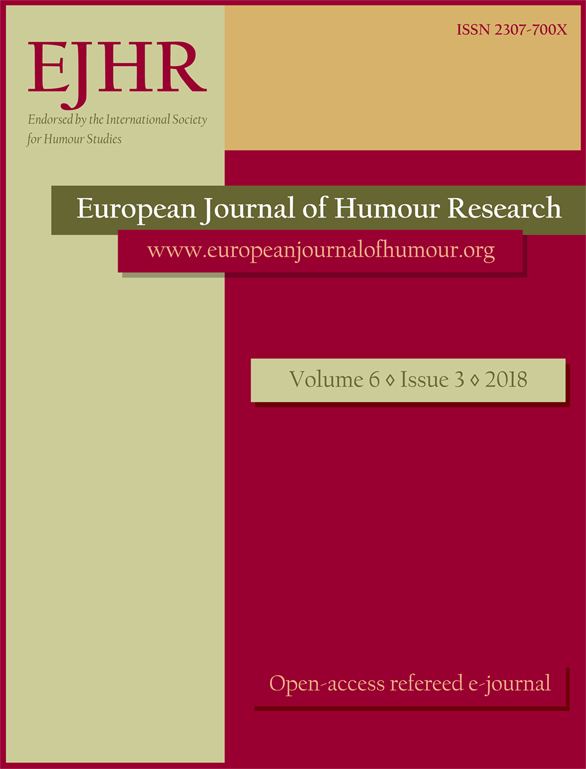
This article addresses the synthesis of humour and paranoia in portrayals of artificial intelligence (AI) in the popular American podcast Welcome to Night Vale (2012-). It argues that contrary to the Relief Theory, fusing humour and cyber-paranoia does not help release the tension (anxious energy) generated within the narrative. Rather, the synthesis of humour and paranoia maintains suspense by creating within the narratives moments of ambiguity with the potential to leave the reader or audience caught between fear and laughter after the story ends.
More...
Incongruity theories maintain that the core of humour is in interplay between meanings. Two incompatible meanings – of situations, verbal utterances or actions – are juxtaposed, one replacing the other or colliding with it. In this paper, I suggest that often the game is not played between two meanings, but between meaning and its carrier. I provide as examples two families of jokes and one general type of humour sharing this mechanism. One of the two families comprises jokes of self-reference, and the other consists of jokes based on deflation of symbols, which means using them in a concrete sense. The general type of humour is the subject of Bergson’s 1900 theory of the comic, mechanical behaviour where flexible human reaction is expected. The mechanism common to all three is a shift of weight from meaning to its carrier. This mechanism is then traced also in other jokes, suggesting possible universality.
More...
The comedic arts have provided opportunities for humourists to spread information to audiences, sometimes intentionally and other times as a side effect while trying to create laughter. Educators have also found success incorporating comedy into the classroom with humorous activities. While research regarding comedy as a tool to spread information or educate audiences has focused primarily on literature, broadcast media, and film, the area of informative comedy implemented through music remains relatively unexplored. In this paper, the researcher defines ‘informative comedy’ and takes a critical literacy approach analysing song samples of comedy musician “Weird Al” Yankovic—one of the notable comedic music artists in the 20th and 21st centuries—and discusses how his music could be used in a classroom setting. While comedy such as Yankovic’s is not designed to be an educational tool, the researcher suggests that his songs could be used as supplementary materials in the classroom to reinforce concepts specifically regarding cultural issues through commentary as well as lessons in science and grammar. A central aspect of this exploratory paper involves Yankovic’s mix of comedy and informative content focused on culture in the United States, using the popular music genre to convey ideas in ways that may be more palatable for wider audiences and that could be used to assist classroom instruction.
More...
This research examines the extent to which the integration of humorous literary texts in teaching the Arabic language affects achievement in reading comprehension among Grade 4pupils in the Arab sector in Israel. This research is the first one in the field. Research on the integration of humour in the study of Arabic language as first language does not exist so far.There are very few studies dealing with the integration of humour in the learning process of Arabic as a second language (only three were found). Hence, there are no studies dealing with the integration of humour in the educational field in the Israeli Arab sector. The research took place in one school in the Bedouin sector in the South of Israel. It was based on one experimental class and one control class The study examined the level of the pupils’ knowledge in all components of comprehension: explicit and implicit content, interpretation and integration, evaluating texts and drawing conclusions. The experimental classes studied six humorous stories whereas the control classes studied six stories without humour. The results of the experiment show that the achievements of pupils who learned comprehension using humorous stories was much higher than those in the control classes. In addition, a more positive learning environment was reported in the experimental classes.
More...

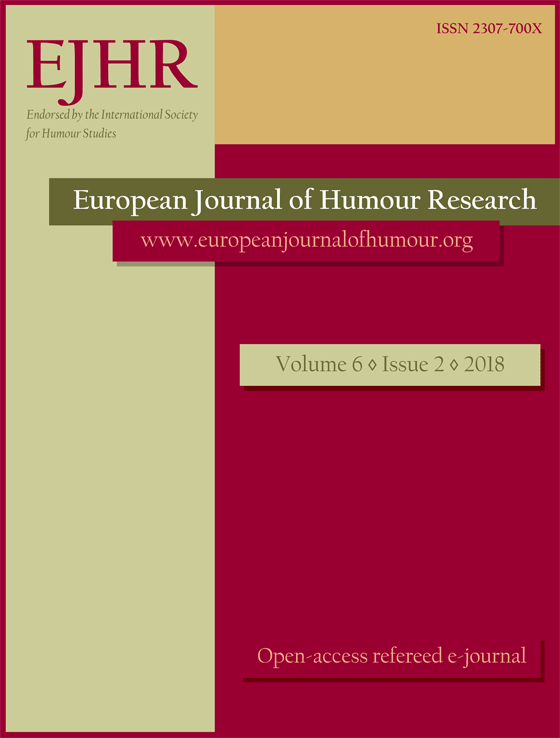
This paper is a tribute to Belarusian folklorist and ethnographer Uladzimir Sysou (1951- 1997) whose extensive legacy includes collecting 139 jokes during his field research in southern Belarus in 1995. Due to his untimely death, these jokes and other folklore items remain unpublished and have, to my knowledge, not been noticed by folklorists. Half of the collected jokes focus on family relations, mostly the relationship between husband and wife. One of the most popular topics of these jokes is adultery. The joke texts show an ambiguous attitude of people towards it. While committing adultery is considered improper, not a lot of effort is made to conceal it. If (or rather, when) a case of adultery comes to light, it does not lead to any serious problems for either spouse in jokes. When studying these jokes, it is curious to place them in historical context and compare them to earlier, Soviet-era jokes about adultery. This study discusses why jokes about adultery in Sysou’s collection differed both quantitatively and qualitatively from adultery jokes found in Soviet collections. The study shows that the high prevalence of jokes on the subject in Sysou’s collection and the liberal attitude towards adultery manifested in them result largely from the decrease in selfand state censorship in Belarus in the early 1990s, set against a backdrop of value pluralisation triggered by the collapse of the USSR.
More...
In my research paper I examine the first two election campaigns in Hungary following the Austro-Hungarian Compromise (1867). In particular, I analyse the ways the campaigns employed tools of humour in popular press products of the time, such as caricatures and texts in humour magazines (Ludas Matyi [‘Mattie the Goose-Boy’], Az Üstökös [‘The Comet’], Borsszem Jankó [‘Johnny Peppercorn’]), which were considered effective political weapons by contemporaries. After a history-oriented introduction devoted to illustrating the muchdebated content of the Compromise, the election system and the historical significance of the analysed papers, I categorize caricatures and the humorous or satirical texts related to the election of parliamentarians along the lines of the following aspects: (1) attacks against specific people, (2) standing up against the principles and political symbols of the opponent, (3) listing well-known, everyday anti-theses, (4) standing up against the press of the opponent, (5) judgment of the role of the Jewish, (6) war metaphors, (7) critique of the campaign methods of the opponent. My goal is to reveal what tools were used to ridicule political opponents, how parties were described to (potential) voters, how the parties tried to promote voting and convince people of their points of view. The analysed texts clearly depict the division of the Hungarian society (either supporting or rejecting the Compromise), and also document that the political tones became coarser and coarser, even in this humorous genre. During campaigns, the topic of elections took over the humour magazines, which serves as evidence for the intensity of public interest.
More...
Most ethnic humour that has been studied so far consists of jokes which use ethnically nonspecific qualities such as stupidity or canniness in order to ridicule an ethnic group and thus to preserve and perpetuate ethnically based social hierarchies in western industrial societies. In light of this dominant logic in ethnic humour theory, the objective of this study is to problematize the relation of such non-ethnic qualities and the notion of ethnic identity, as well as their relation to a specific type of society, in an attempt to convincingly argue in favour of the need to differentiate between ‘ethnically-empty’ functional joke scripts and genuine ethnic joke scripts that are related to the ethnic identity of the target. In so doing, I extend ethnic humour theory by introducing and testing the notion of genuine ethnic joke scripts in order to motivate future research that will tackle other potential ethnic humour idiosyncrasies. Toward this end, I have collected and analysed joke material (N=369) coming from Macedonia, Bulgaria, Serbia, and Albania, societies with histories and relations very different that those in the western industrial societies. Additionally, the study incorporates two questionnaires with members of the two largest ethnicities in the Republic of Macedonia, Macedonians and Albanians, to ascertain the relation between the genuine ethnic humour and ethnic identity.
More...

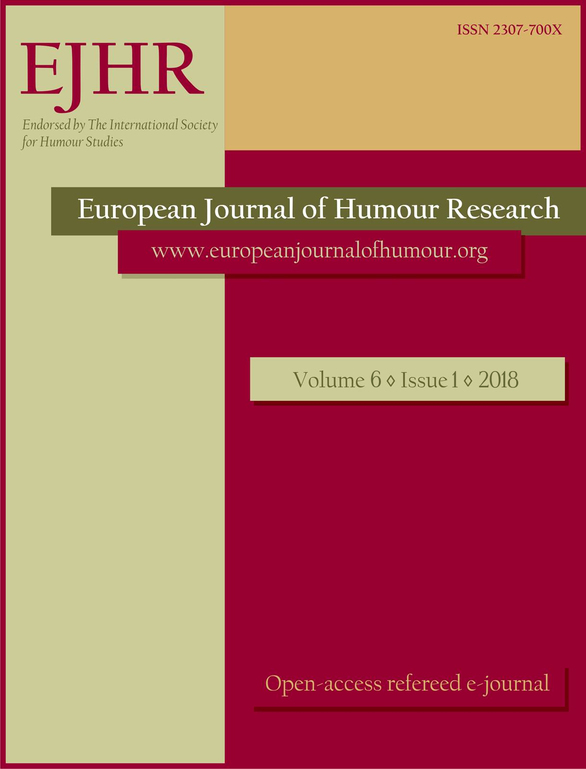
The article focuses on the interpretation of political cartoons and the means of expression a cartoonist uses to convey a message: visual metaphors, visual metonymies as well as metaphors inferred from the image and/or text. The metaphors and visual metonymies in the cartoons are analyzed from the point of view of Conceptual Metaphor and Metonymy Theory. In the analysis, visual and inferential metaphors are viewed as incongruities; there are also incongruities as a result of the interaction between image, title and/or caption. Political cartoons can have more than one focal (visual) incongruity that enables the introduction of a Logical Mechanism from the General Theory of Verbal Humour (GTVH) to (partially) resolve the incongruity/ies. Visual metonymies and images can also function as enablers of a Logical Mechanism. Image and/or text can contrast with or reinforce a Logical Mechanism. Additionally, visual metaphors and metonymies function as contextualization indexes in the interpretation of the cartoons. Humour is the means to get the cartoonist’s message across to the viewer/reader and not an end in itself.
More...
Many of Ernst Cassirer’s later works are concerned with the dangers of political myth. His analysis speaks at length about the role of philosophy during the rise of the Third Reich, and Cassirer argues that philosophers failed to combat the dominant ideology. Today, philosophers struggle to explain their relevance to greater public and governmental powers that see no intrinsic value. Given the current political situation in the US, we find ourselves at a crossroads as philosophers. We can either retreat and remain within the comforts of academia, or we can take up arms against dangerous and divisive political forces. If we take Cassirer’s prescriptions seriously, we must choose the latter. Fortunately, philosophy has not disappeared from public consciousness completely. An emerging theme in contemporary cultural studies is the exploration of connections between humour and philosophy. I argue we ought to take advantage of the status of the comedian as public philosopher, and for philosophers to take seriously the political power of comedians. To do this responsibly, I analyse a portion of Cassirer’s work that has been widely ignored in scholarship – his understanding of the politics and morality of humour. By analysing these passages in relation to Cassirer’s later works, we are given the tools to understand the power of humour in political discourse, as well as the responsibility of that power. I argue that “joking responsibly”, for Cassirer, means to reveal the motives and values which underlie sophistry, particularly the sort which lends itself to political manipulation.
More...
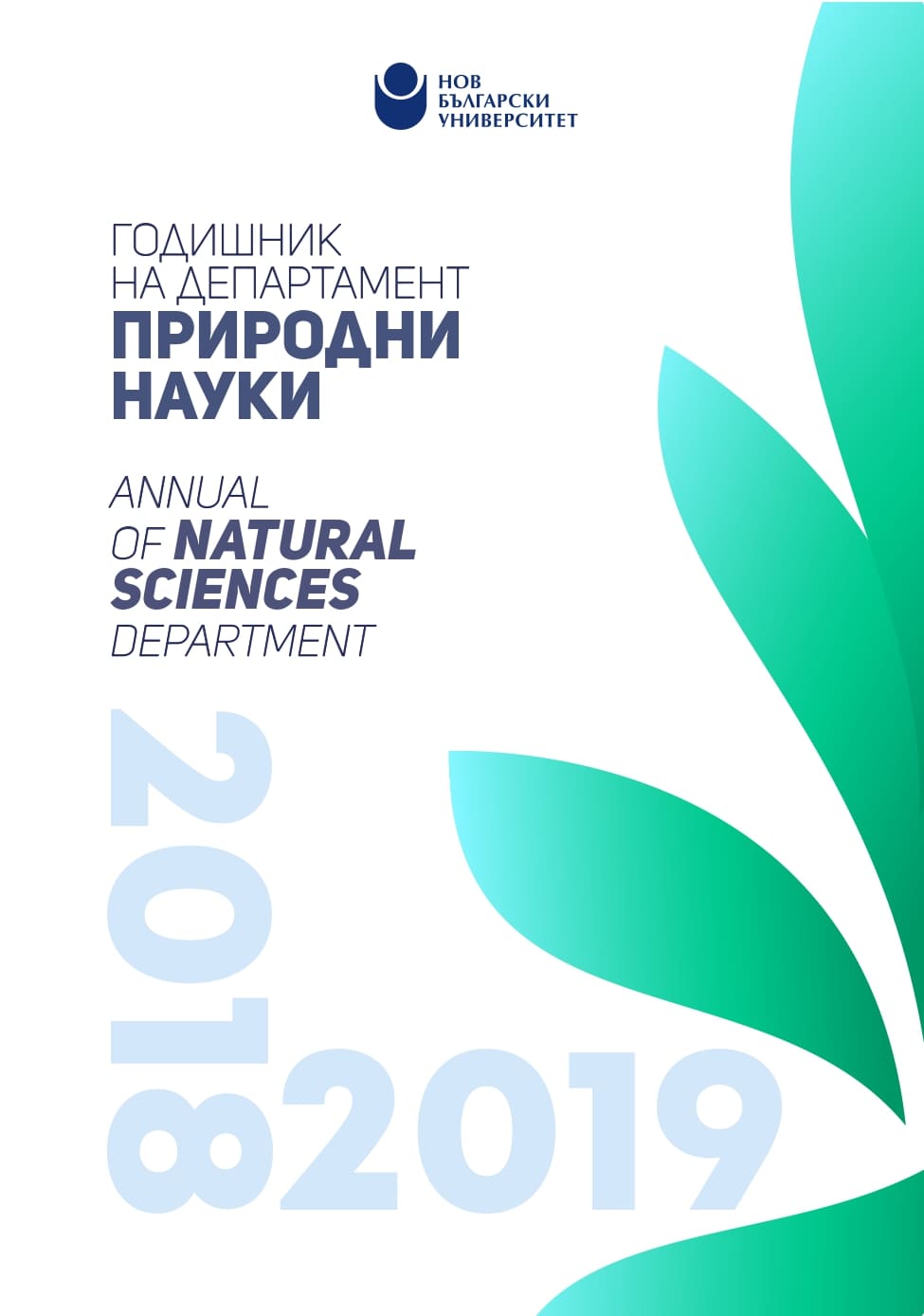
The official data of the Executive Environment Agency (ExEA) for the contents of SO2, NO2, fine air particles, O3, CO and C6H6 in the atmospheric air on the territory of Sofia for a 12-year period (2007 – 2018) are analyzed. The trends in their seasonal and annual changes defining the air quality in the urban environment are outlined.
More...
Geo-archaeological field surveys have been carried out in the Western part of the Zlatitsa-Pirdop valley. Archaeological sites and surface collections, traces of metalworking of iron were registered to restore the economic models in ancient times.
More...
This study presents the possibilities for using different colour models for visual interpretation of satellite imagery. Using the RGB model to visualise different spectral bands as a false colour composite image make it possible for different types of objects and features on the Earth surface to be highlighted and easily discerned based on their specific colour. Examples are shown based on satellite imagery from several free sources, e.g. the USGS’s Earth Explorer, the ESA’s Copernicus Open Access Hub, etc.
More...
This paper presents the algorithm for determining the concentration of dissolved oxygen in the Black Sea according to data from Argo probes. A comparison was made between data from two Argo probes released in the Black Sea in 2011 and 2014.
More...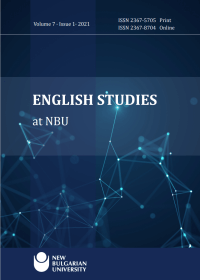
It is considered that the Puritans that populated New England in the 17th century left a distinctive mark on the American culture. The article explores some projections of Puritan legacy in two American novels of different periods – Nathaniel Hawthorne’s The Scarlet Letter (1850) and Stephen King’s Carrie (1974). After establishing a connection between the Puritan writings and gothic literature, the two novels are analyzed in terms of some Puritan projections, among which are the problem of guilt and the acceptance of an individual in the society. Some references regarding the idea of the witch and the interpretations it bears, especially in terms of the female identity, are also identified. Despite the different approach of the authors in terms of building their characters, those references are mostly used in a negative way, as an instrument of criticism and exposing inconvenient truths.
More...